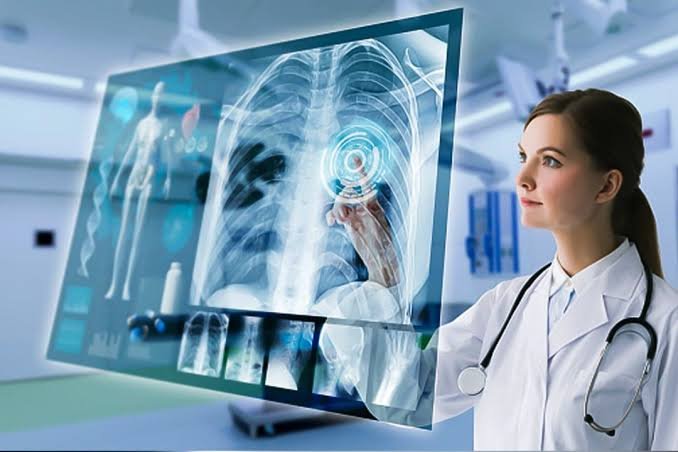What if physicians could envision the body’s interior to an extent of perfect clarity, spotting diseases before symptoms have arisen? This is no longer science fiction; it is the rapidly approaching reality in the world of medical imaging.
The Diag image technology, sometimes called diagnostic imaging, is the various types of technologies used to take images of the human body’s internal structures. These state-of-the-art systems have taken health care from something akin to guesswork to precision medicine, giving doctors the ability to diagnose earlier and track treatment in real time and to direct interventions with unprecedented precision.
For clinicians, these breakthroughs translate into quicker diagnoses and better patient outcomes. For patients, it means less-invasive treatments, more targeted therapies and better chances of survival. But in what specific ways are these toolkits reshaping the medical terrain?
The Modern Arsenal of Medical Imaging Techniques
Healthcare tech extends well beyond fancy X-rays. Nowadays, the arsenal of diagnostic imaging at our disposal is a set of several sophisticated techniques, each conceived for specific clinical indications.
CT Scans: The Diagnostic Workhorse
CT is one of the most versatile diagnostic imaging modalities in use. With approximately 80 million CT scans carried out in the United States in 2015, it is the cornerstone of cancer staging, cardiovascular evaluation and emergency diagnostics.
CT is excellent in the investigation of cancers of the bladder, ureter, kidney (primary or metastatic), skeleton, neck and head and other sites and in demonstrating distant metastases to all major organs. Depending upon the size, even 1.5-2.0 cm-sized tumours are seen, thus facilitating an early diagnosis. Advanced techniques such as volumetric quantitative CT contribute to the study of bone diseases, especially osteoporosis and bone cancer.
MRI: Soft Tissue Excellence
Magnetic Resonance Imaging (MRI) provides superior soft tissue contrast and no ionizing radiation. This is especially good for diagnosing MS, CNS tumors, brain and spine infections, and ligament tears. The method can yield superb visualization of anatomy and physiology in health and disease.
What sets MRI apart? It has the power to show functional processes and thereby diagnose complex neurological diseases with a fantastic level of accuracy.
PET and SPECT: Molecular-Level Insights
PET scanners visualize biological processes at the cellular and subcellular levels. When performed in PET/CT hybrid systems, it offers both anatomical and functional data concomitantly. This combination is beneficial for monitoring inflammatory and infectious diseases and their responses to treatment.
PET technology can also diagnose Alzheimer’s disease with 93 percent accuracy and identify inherited disorders such as Huntington’s disease. SPECT supplements this with a three-dimensional gamma ray representation.
Specialized Applications
Digital mammography is a revolution in breast screening, providing faster, more accurate results with lower radiation dose than traditional mammogram methods. Three-dimensional ultrasound computed tomography (3D USCT) can able to reconstruct the complete breast volume within only four minutes so that it an attractive technology for breast cancer detection.
DGH’s reputation has been built on producing high-quality ophthalmic ultrasound instrumentation. Beyond that, what makes DGH A stand apart is the unwavering promise to create reliable, cost-effective options designed specifically for the individual needs of eye care professionals.
Transforming Patient Outcomes
What does all this fancy new medical imaging mean for patient care? The effect is felt across many areas of medicine and treatment.
In the field of oncology, advanced imaging can be used to detect tumours before they become palpable, monitor response to treatment in real-time and allow accurate targeting of radiation therapy. This has a direct impact on higher survival rates and potentially also on quality of life.
Rapid CT protocols that can diagnose stroke, trauma, and internal bleeding in the minutes after a patient arrives have already revolutionized emergency medicine. This pace can be the difference between life and death in a time-sensitive condition.
Detailed evaluation of cardiac structure and function by advanced techniques ensures early detection of heart disease and accurate detection of congenital conditions that will enhance cardiology.
The Competitive Landscape and Future Innovations
The medical imaging field is still advancing at a pace. Companies such as GE Healthcare Imaging are already pushing the envelope with AI-powered imaging systems that can spot abnormalities more quickly than human radiologists in certain use cases.
| Imaging Type | Key Advantages | Primary Applications |
| CT | Fast, detailed bone/organ imaging | Cancer detection, emergency diagnosis |
| MRI | Superior soft tissue contrast, no radiation | Neurological conditions, musculoskeletal injuries |
| PET/CT | Functional and anatomical data combined | Cancer staging, treatment monitoring |
| 3D USCT | Rapid breast imaging, no compression | Breast cancer screening |
| Digital Mammography | Reduced radiation, improved accuracy | Breast cancer detection |
New developments include A.I.-driven image analysis that allows for quicker diagnoses. These portable imaging devices can take advanced diagnostics to remote localities and molecular imaging that can spot diseases at the cellular level.
The next frontier lies in fusing the AI with multimodal imaging to develop holistic diagnostic platforms that deliver prompt and rigorous results.
Reshaping Healthcare’s Future
Instead of just taking pictures, advanced diagnostic imaging has become the foundation of precision medicine. These tools allow doctors to see what was previously unseen and treat patients with a new level of precision.
The question is not whether advanced imaging will keep transforming health care. It’s how well you can pivot your health care system to use these powerful tools for improved patient outcomes. For healthcare managers and decision-makers, advanced imaging infrastructure investment is, on the one hand, a modernization of technical facilities, and, on the other hand, a proof of commitment to reach the highest standard of assistance to patients.
